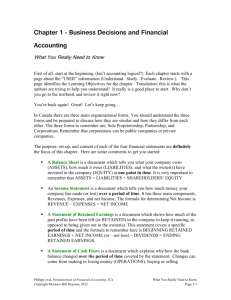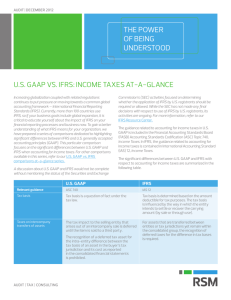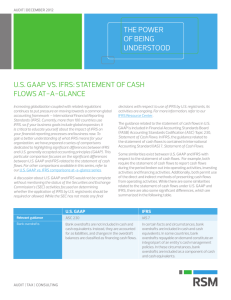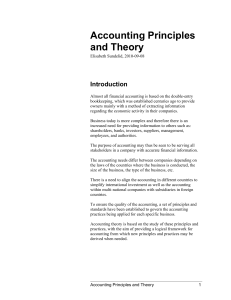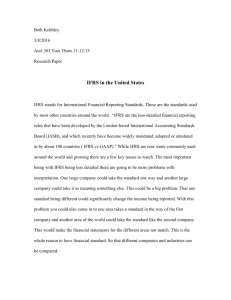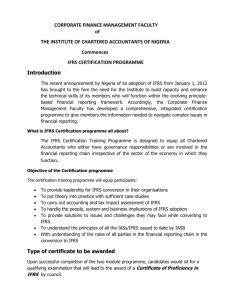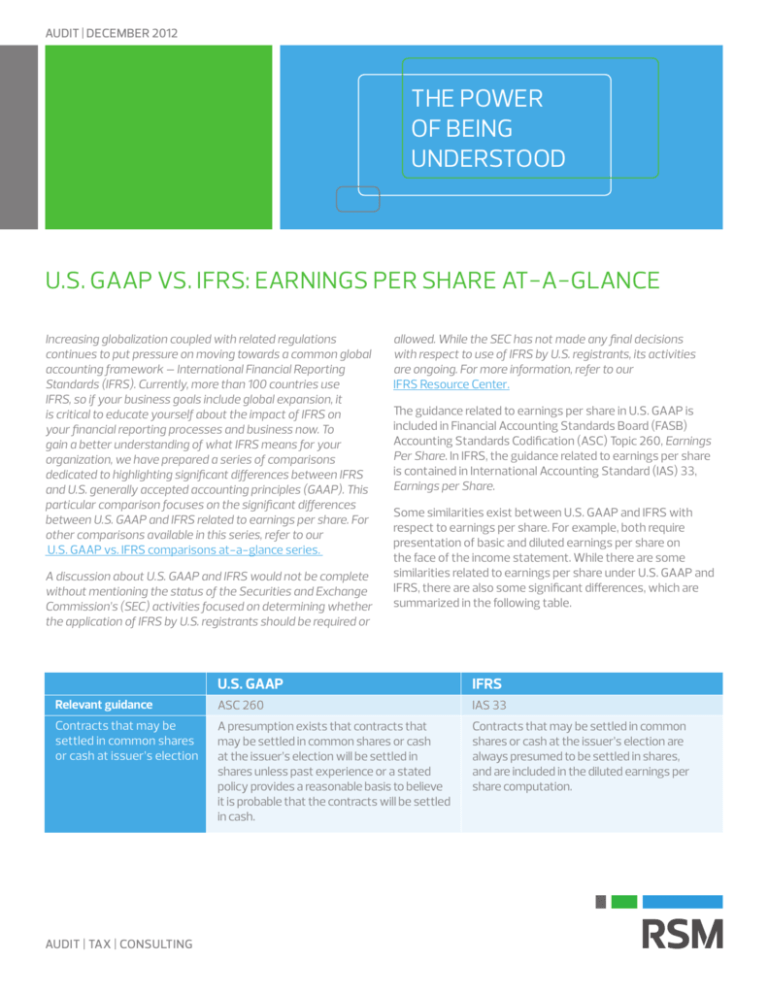
AUDIT | DECEMBER 2012
THE POWER
OF BEING
UNDERSTOOD
U.S. GAAP VS. IFRS: EARNINGS PER SHARE AT-A-GLANCE
Increasing globalization coupled with related regulations
continues to put pressure on moving towards a common global
accounting framework – International Financial Reporting
Standards (IFRS). Currently, more than 100 countries use
IFRS, so if your business goals include global expansion, it
is critical to educate yourself about the impact of IFRS on
your financial reporting processes and business now. To
gain a better understanding of what IFRS means for your
organization, we have prepared a series of comparisons
dedicated to highlighting significant differences between IFRS
and U.S. generally accepted accounting principles (GAAP). This
particular comparison focuses on the significant differences
between U.S. GAAP and IFRS related to earnings per share. For
other comparisons available in this series, refer to our
U.S. GAAP vs. IFRS comparisons at-a-glance series.
A discussion about U.S. GAAP and IFRS would not be complete
without mentioning the status of the Securities and Exchange
Commission’s (SEC) activities focused on determining whether
the application of IFRS by U.S. registrants should be required or
allowed. While the SEC has not made any final decisions
with respect to use of IFRS by U.S. registrants, its activities
are ongoing. For more information, refer to our
IFRS Resource Center.
The guidance related to earnings per share in U.S. GAAP is
included in Financial Accounting Standards Board (FASB)
Accounting Standards Codification (ASC) Topic 260, Earnings
Per Share. In IFRS, the guidance related to earnings per share
is contained in International Accounting Standard (IAS) 33,
Earnings per Share.
Some similarities exist between U.S. GAAP and IFRS with
respect to earnings per share. For example, both require
presentation of basic and diluted earnings per share on
the face of the income statement. While there are some
similarities related to earnings per share under U.S. GAAP and
IFRS, there are also some significant differences, which are
summarized in the following table.
U.S. GAAP
IFRS
Relevant guidance
ASC 260
IAS 33
Contracts that may be
settled in common shares
or cash at issuer’s election
A presumption exists that contracts that
may be settled in common shares or cash
at the issuer’s election will be settled in
shares unless past experience or a stated
policy provides a reasonable basis to believe
it is probable that the contracts will be settled
in cash.
Contracts that may be settled in common
shares or cash at the issuer’s election are
always presumed to be settled in shares,
and are included in the diluted earnings per
share computation.
AUDIT | TAX | CONSULTING
Year-to-date calculation of
diluted earnings per share
Treatment of certain
contingent features included in
convertible debt securities
U.S. GAAP
IFRS
The treasury stock method is applied to
instruments such as options and warrants.
The number of incremental shares is computed
using a year-to-date weighted-average
number of incremental shares by using the
incremental shares from each quarterly
diluted earnings-per-share computation.
The number of incremental shares is
computed independently for each period
presented rather than computing a
weighted average of the dilutive potential
common shares included in each interim
computation. In other words, if an annual
reporting period is presented, then the
number of incremental shares is computed
for that annual period and does not
reference the quarterly computations of
incremental shares.
The potentially issuable shares from
convertible debt securities that contain
conversion features that are triggered
upon an entity’s stock price reaching a
predetermined price should always be
included in the diluted earnings-per-share
calculation if dilutive, regardless of whether
the market price trigger has been attained.
Potentially issuable shares from convertible
debt securities that contain conversion
features that are triggered upon an entity’s
stock price reaching a predetermined price
are included in the dilutive earnings-pershare calculation only if the market price
trigger has been attained as of the
reporting date.
These are the significant differences between U.S. GAAP and
IFRS related to earnings per share. Refer to ASC 260 and IAS
33 for all of the specific requirements applicable to earnings
per share. Refer to our U.S. GAAP vs. IFRS comparisons
at-a-glance series for more comparisons highlighting other
significant differences between U.S. GAAP and IFRS.
Contact:
Richard Stuart, Partner
National Accounting Standards Group, RSM US LLP
+1 203 905 5027
richard.stuart@rsmus.com
+1 800 274 3978
www.rsmus.com
This document contains general information, may be based on authorities that are subject to change, and is not a substitute for professional advice or services. This document does not constitute audit, tax, consulting,
business, financial, investment, legal or other professional advice, and you should consult a qualified professional advisor before taking any action based on the information herein. RSM US LLP, its affiliates and related
entities are not responsible for any loss resulting from or relating to reliance on this document by any person. RSM US LLP is a limited liability partnership and the U.S. member firm of RSM International, a global network
of independent audit, tax and consulting firms. The member firms of RSM International collaborate to provide services to global clients, but are separate and distinct legal entities that cannot obligate each other. Each
member firm is responsible only for its own acts and omissions, and not those of any other party. Visit rsmus.com/aboutus for more information regarding RSM US LLP and RSM International. RSM® and the RSM logo
are registered trademarks of RSM International Association. The power of being understood® is a registered trademark of RSM US LLP.
© 2015 RSM US LLP. All Rights Reserved.
IS_AS_0915_IFRS Earnings Per Share At A Glance


